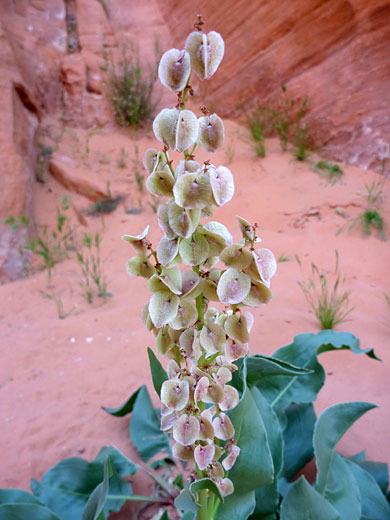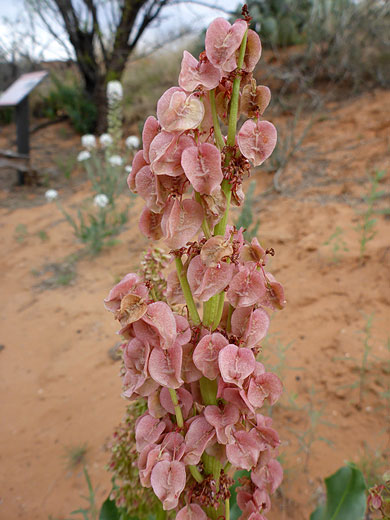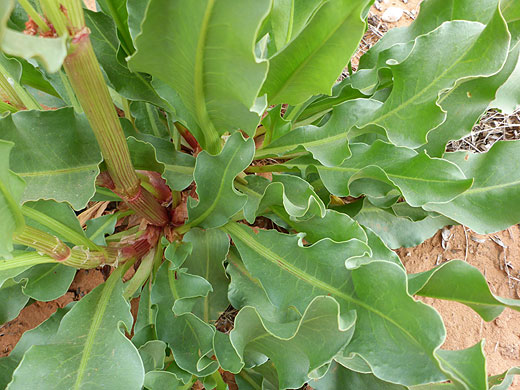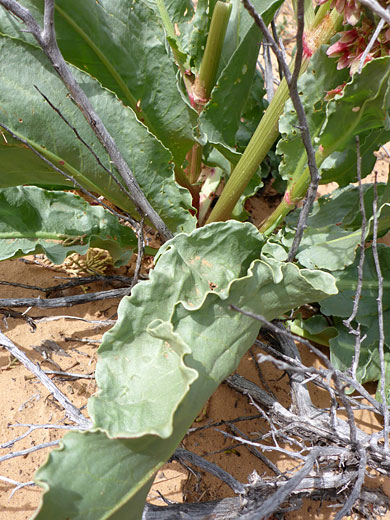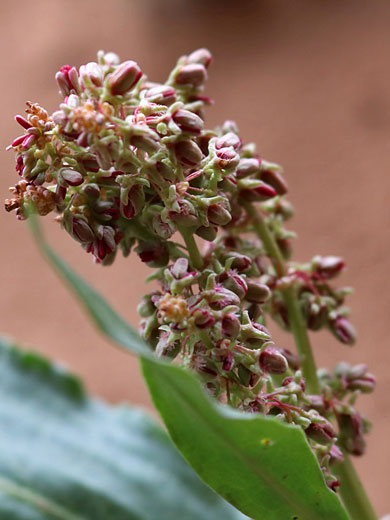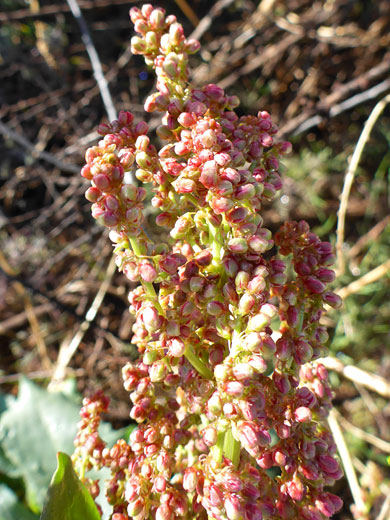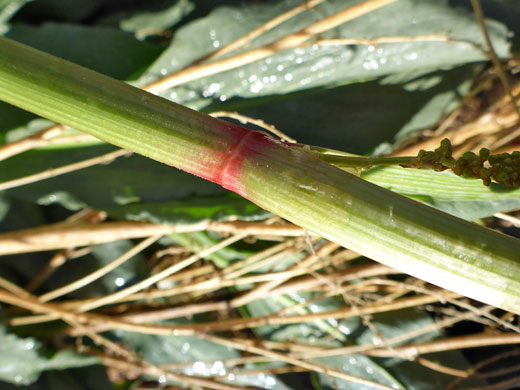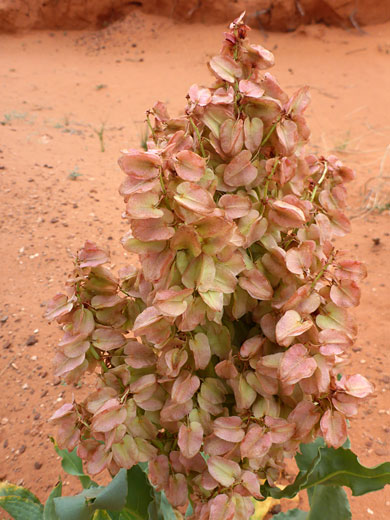Common names:
Wild rhubarb, desert rhubarb, canaigre, Arizona dock
Family:
Scientific name:
Rumex hymenosepalus
Main flower color:
Range:
From California, east to Texas and Oklahoma, and north to Wyoming
Height:
Up to 4 feet
Habitat:
Sandy locations; washes, dunes, fields; sea level to 6,000 feet
Leaves:
Green, lanceolate, 15 inches or more in length, with curly edges and a pointed tip
Season:
January to May
The reddish pink inforescense of rumex hymenosepalus consists of elongated clusters of many dozen small flowers, each formed of small sepals about half an inch long. Plants have a thick root cluster, used by early Spanish settlers as a source of tannin. The smooth, reddish stems are also thick, an inch across at the base, and have nodes at intervals from which grow large, waxy, curly-edged leaves, at the base and along the lower half, and flower stems towards the top. Younger leaves are edible. Flowers are followed by three-pronged oval seed pods, light brown or pink in color; these persist longer than the flowers. All plant parts are essentially hairless.
All Contents © Copyright The American Southwest | Comments and Questions | Contribute | Site Map



